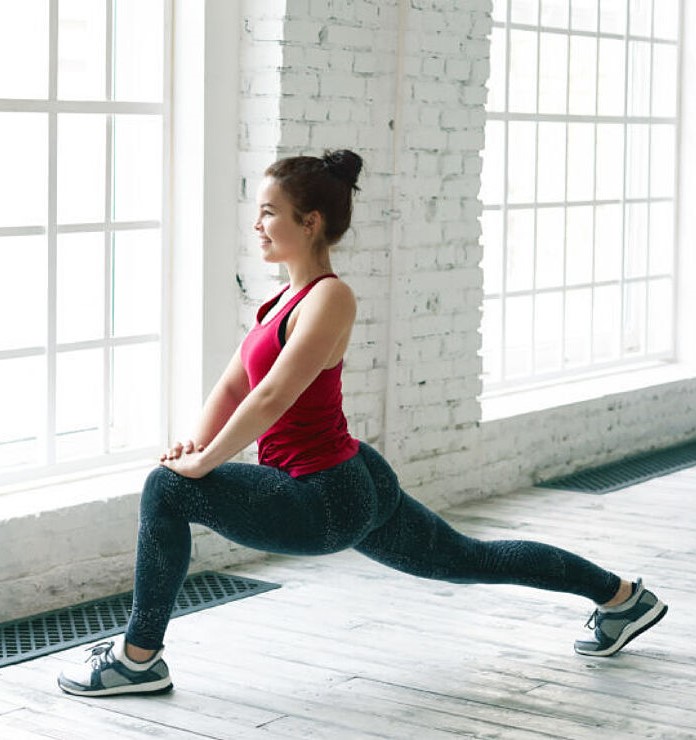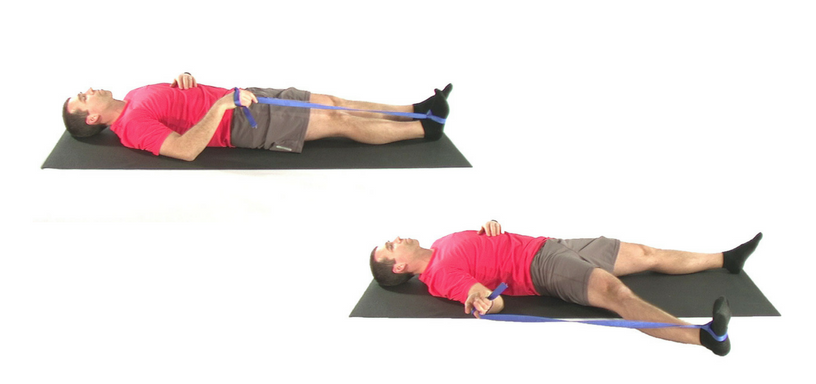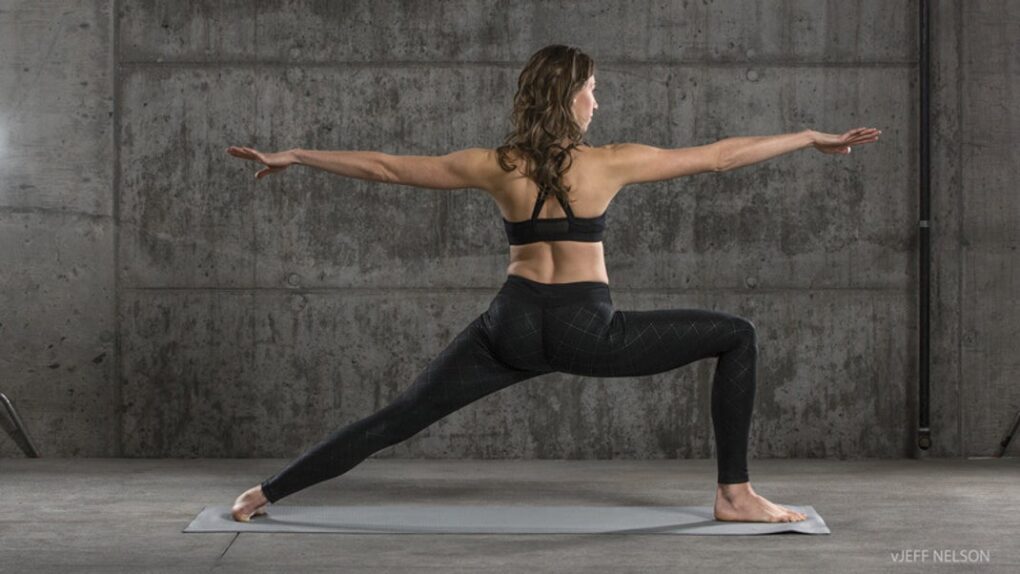Table of Contents
- Activities to Avoid or Change
- For Temporary Relief
- Stretches and Exercises for Longer-Lasting Relief
- Yoga Corner
Here, you will find self-care strategies to relieve the warm, superficial pain of gracilis trigger points. Look at this other post for more information about how people describe this pattern.
Activities To Avoid or Change:
Side to Side Exercise
Exercises like lunges, side steps, box jumps, etc. aggravate this. I LOVE lunges and recommend them regularly, but they’ll aggravate this trigger point. Unfortunately, a new exercise routine that includes lunges sometimes activates this pattern. So, just be gentle. If it seems to be improving, stay with it. Typically, the referral patterns shift and go away in 2-3 weeks.
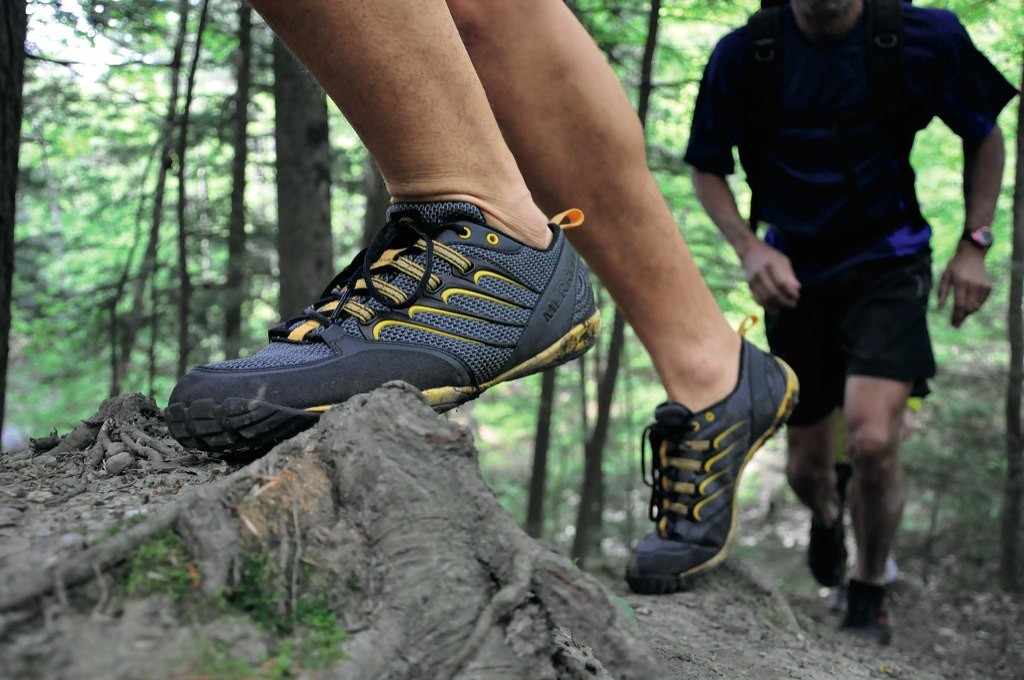
Uneven Ground, Lurching Sports
Trekking over shifting and unstable ground also aggravates this. Also, trail walking or walking over dunes won’t feel good and may really irritate this.
Of course, choppy sports movements stress this muscle. This includes sports like tennis, basketball, or skateboarding may also agitate this trigger point.
For Temporary Relief:
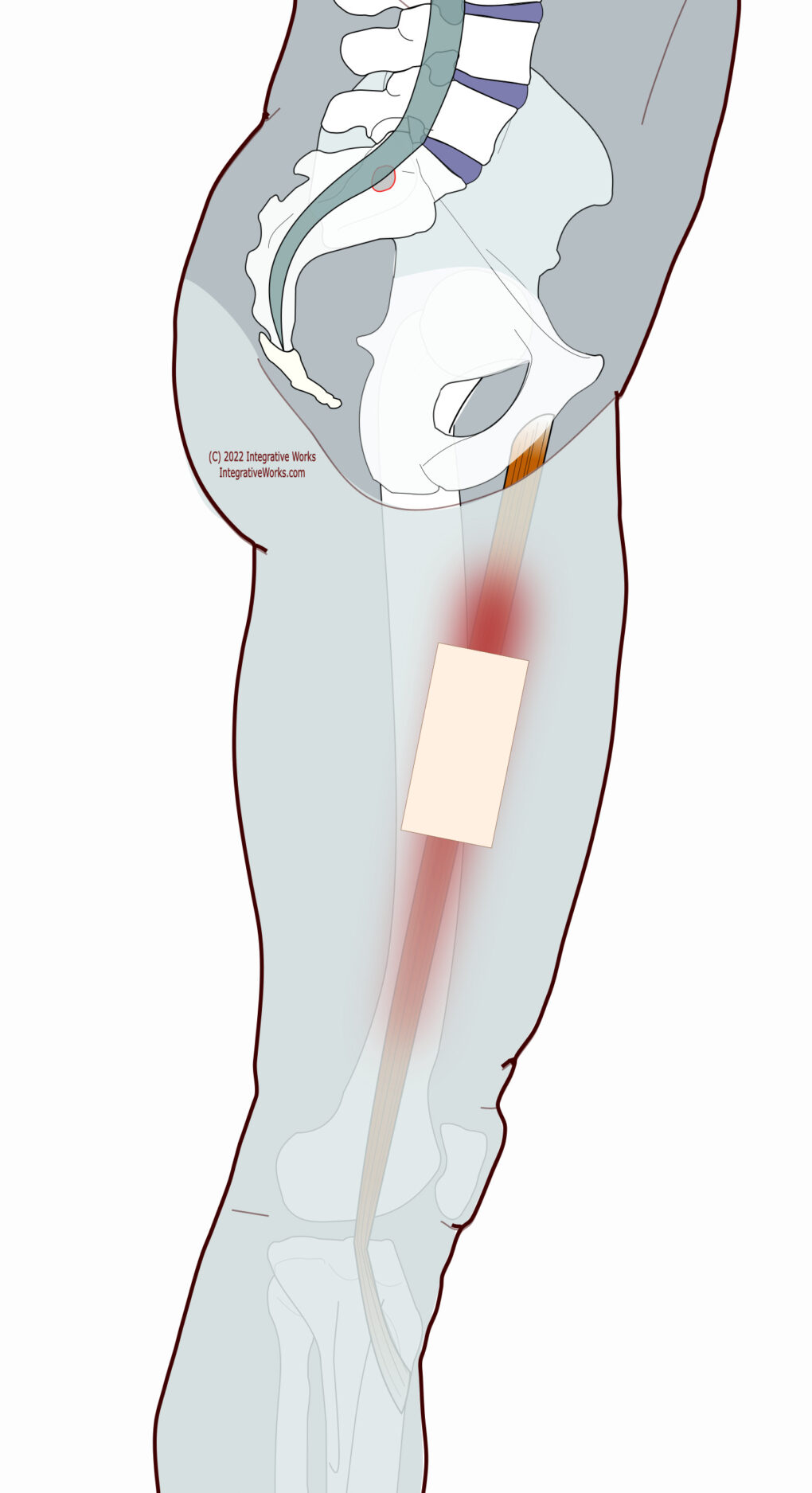
Topical Pain Patches
This is one of those cases where the patch is most effective if you place it where it bothers you. In this case, the trigger points tend to be in the center of the pain pattern. Also, I’d avoid vapocoolant sprays or creams as they tend to spread and may get in your underwear.
At times, it is not practical to use a patch. At times, you may not have access to one. On the other hand, you may be wearing something that reveals the patch or something that rubs it off. In those cases, stroke the inside of the thigh with ice. So, take about 10 seconds to ice along the irritated area from the groin to the knee. Afterward, sway back and forth 4 or 5 times or walk for a few minutes. Yoga poses like Warrior, which is shown below, work. Often, this will offer temporary relief if you’re trying to sit or sleep for a bit.
These self-care activities, like over-the-counter drugs, are not intended to replace appropriate medical attention. If you have concerns about these self-care activities, get help from a professional. Use these suggestions and strategies with discretion and at your own risk. See your doctor when your pain is severe, persistent, or not responding to these simple suggestions.
Stretches and Exercises for Longer-Lasting Relief:
The Gentle Start
Start gently. This muscle is usually quick and easy to release. Moreso, this stretch is easy and effective in a laying position. You can use a yoga strap or a bathrobe if you don’t have a section of rope. Additionally, use the AIS ice-and-stretch approach for quicker and more effective stretching.
Cautions
There are many other adductor stretches out there. Especially if you are elderly or frail, here are a few things to avoid. First, avoid stretches that have you balanced on one leg. They tend to be less stable and can lead to sudden shifts that aggravate this. Secondly, this muscle flexes the hip. You’ll be more effective if you don’t use one of the common stretches that flex your hip. Third, be gentle. Aggressive stretching may aggravate this.
I’d love your feedback on how this works for you and any suggestions you might have.
Email me at integrativeworks@gmail.com.
Yoga Corner
Gentle Side Steps
Moves like this warrior pose gently spread the legs and stretches the adductors. They’re great when this is a mild pain pattern.
Also, gracilis is an assistive hip flexor. Naturally, hip-extending exercises like pigeon are a great warm-up.
Support Integrative Works to
stay independent
and produce great content.
You can subscribe to our community on Patreon. You will get links to free content and access to exclusive content not seen on this site. In addition, we will be posting anatomy illustrations, treatment notes, and sections from our manuals not found on this site. Thank you so much for being so supportive.
Cranio Cradle Cup
This mug has classic, colorful illustrations of the craniosacral system and vault hold #3. It makes a great gift and conversation piece.
Tony Preston has a practice in Atlanta, Georgia, where he sees clients. He has written materials and instructed classes since the mid-90s. This includes anatomy, trigger points, cranial, and neuromuscular.
Question? Comment? Typo?
integrativeworks@gmail.com
Follow us on Instagram

*This site is undergoing significant changes. We are reformatting and expanding the posts to make them easier to read. The result will also be more accessible and include more patterns with better self-care. Meanwhile, there may be formatting, content presentation, and readability inconsistencies. Until we get older posts updated, please excuse our mess.

